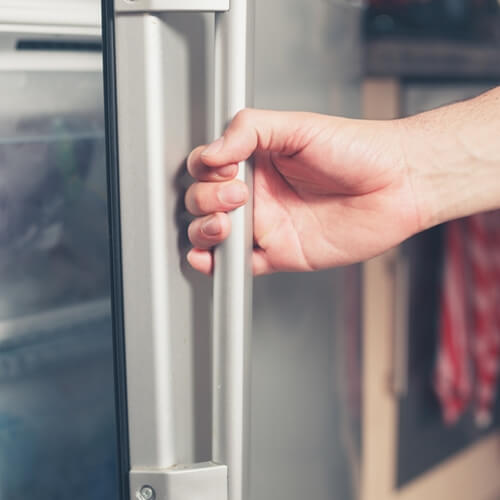The Most Efficient Way To Organize Your Refrigerator

According to The Kitchn, the professional method of organizing your refrigerator is based on the safety of the food when uncooked. This is storing the foods that don’t need to be cooked on the top, and working your way down to the items that need to be cooked to be safe to eat on the bottom. This method works so that if anything drips to a lower shelf, whatever it contaminates will have had to be cooked at a higher temperature anyway. If you’re taking culinary arts programs online, chances are you have a fully-stocked refrigerator that needs some organizing.
The fridge is coldest towards the bottom and in the back, and the warmest on the door. The middle shelf tends to have the most consistent temperature. The drawers on the bottom of the fridge are designed to house things that need a little bit of humidity, like produce.
What to store on your highest shelf:
- Drinks like soda pop, juices and beer.
- Leftovers, stored in a plastic container rather than the
- Food that you can pull out and eat without warming up.
What to store on your middle shelf:
- Eggs in their original container, not the egg holder in the door.
- Items that are perishable, but don’t need to be ultra-cold.
- Things that you plan to cook to eat.
What to store on your bottom shelf:
- Milk, especially if you like to drink your milk as cold as possible. Store it towards the back of the fridge.
- Yogurt, cottage cheese or any other dairy product that spoils easily.
- Lunch meat, if there isn’t a shallow meat drawer.
- Raw meat, in a plastic bin or on top of a plate to eliminate the chances of it dripping on to items stored around it or in the drawers.
What to store on the door:
- Condiments like ketchup, mustard, mayonnaise and salad dressings.
- Dry goods, like nuts and flour.
What to store in the drawers:
- Fruits in one drawer and vegetables in the other. Mixing the two can affect the ripening processes, leading you to throw away food before you get to eat it. Some fridges have each drawer labeled depending on the humidity.
What shouldn’t go in the fridge:
- Produce like tomatoes, onions, garlic and potatoes.
- Condiments like honey and peanut butter.
According to Greatist, some of the most common things that people store on top of their refrigerators, like non-refrigerated produce, bread and wine, shouldn’t be up there to begin with. The top of the fridge gets warm and can cause those items to go bad quicker than they would stored appropriately. There is nothing wrong with using the top of your fridge as storage for paper towels or kitchen supplies, just don’t store food up there.
Food shouldn’t be crammed into your refrigerator. Before you go grocery shopping clear out expired items and move everything old in front so you eat it before you eat the new stuff you’ll be buying. In order for the cold air to circulate and keep your food cold, leave space between everything in the fridge. A too-stuffed fridge could lead to weird warm spots in your food, and that’s never appetizing.


